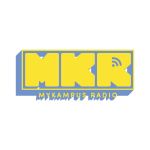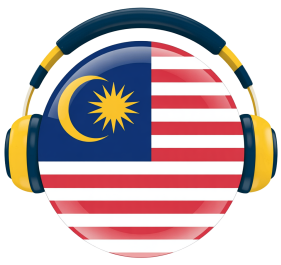Radio remains a cornerstone of Malaysia’s media landscape, delivering music, news, and entertainment to millions across urban and rural areas. With a diverse range of stations catering to Malaysia’s multicultural population, radio continues to thrive despite the rise of digital platforms like streaming services and podcasts. A key question for media enthusiasts, advertisers, and broadcasters is: how many people are listening to radio in Malaysia today? This blog post explores recent statistics, listener demographics, listening habits, and the factors driving radio’s enduring popularity, providing a comprehensive look at its reach and impact.
Quick Answer
As of the latest Radio Audience Measurement (RAM) survey by GfK in 2024, approximately 20.2 million people in Peninsular Malaysia listen to radio weekly, representing a 95% reach of the population aged 10 and above. Listeners tune in for an average of 12 hours per week, with peak listening during breakfast (6 AM–10 AM) and drive time (4 PM–8 PM) segments.
Radio Listenership Statistics in Malaysia
Overall Reach and Weekly Listeners
Radio enjoys a robust audience in Malaysia, particularly in Peninsular Malaysia, where the majority of listenership data is collected. According to the GfK Radio Audience Measurement (RAM) Wave 1 2024, conducted from February 18 to March 30, 2024, 20.2 million people aged 10 and above tune in weekly, equating to a 95% reach of the population. This marks a slight decline from the 2022 high of 21.6 million listeners (97.2% reach), attributed to increased competition from digital platforms, but radio remains a dominant medium. The 2024 survey polled 6,000 individuals using 4,500 paper diaries and 1,500 e-diaries to capture listening habits.
In 2022, the GfK RAM Wave 2 reported 21.6 million weekly listeners, a 300,000 increase from earlier surveys, driven by the lifting of COVID-19 restrictions and a return to normal commuting patterns. The average listener spent 13 hours and 36 minutes weekly, with 15.1 million tuning in via car radios and 14.8 million at home.
Regional Distribution
Listenership varies by region, with the Central region, particularly Selangor, leading the pack. In 2019, Selangor had 5.2 million listeners, followed by Kuala Lumpur (1.5 million) and Negeri Sembilan (0.9 million), totaling 7.7 million in the Central region. The North region, including Perak (2.1 million), Perlis/Kedah (1.9 million), and Penang (1.5 million), had 5.5 million listeners. The South region (Johor: 3.1 million, Malacca: 0.7 million) and East Coast (Kelantan: 1.4 million, Pahang: 1.2 million, Terengganu: 0.9 million) recorded 3.8 million and 3.6 million listeners, respectively. Urban areas account for 89% of listeners (18.3 million), while rural areas contribute 11% (2.3 million).
Listener Demographics
Age and Language Breakdown
Radio appeals to a broad demographic, with significant engagement across age groups and linguistic communities. The 2023 GfK Radio Insights study, surveying 1,200 listeners aged 15–49, highlighted that the 25–39 age group is the largest segment, with 6.7 million listeners weekly, an increase of 123,000 from the previous wave. This group spends over 14 hours weekly tuning in, with 83% (5.4 million) listening in cars and 67% (4.4 million) at home. Younger listeners aged 20–29 have grown to 4.8 million, reflecting radio’s appeal to millennials through engaging content like breakfast shows.
By language, Bahasa Malaysia stations dominate with 13.9 million weekly listeners (63% reach), followed by Chinese stations (4.5 million, 20%), English stations (4.1 million, 19%), and Tamil stations (1.7 million, 8%) as of 2023. Popular stations include ERA (5.3 million, Malay), Sinar FM (5.0 million, Malay), MY FM (2.7 million, Chinese), and Hitz FM (2.2 million, English).
Listening Locations and Devices
Radio listening is heavily tied to mobility and daily routines. In 2023, 15.4 million listeners tuned in via car radios, making in-car listening the top location, followed by 12.9 million at home and 2.1 million at workplaces. The rise of digital platforms has also boosted access, with 5.0 million listeners using television sets and 3.8 million via mobile phones weekly. FM radio sets remain the most popular device, used by 19.4 million listeners, but mobile apps and decoders are gaining traction. Over 7.2 million people engaged with radio stations’ social media pages in 2024, reflecting digital integration.
Peak Listening Times and Programming
Popular Time Slots
Radio listenership peaks during commuting hours, aligning with Malaysia’s urban lifestyle. The breakfast segment (Monday–Friday, 6 AM–10 AM) attracts 14.2 million listeners, while the drive segment (Monday–Friday, 4 PM–8 PM) draws 14.3 million. Afternoon segments (1 PM–4 PM) have seen significant growth, reaching 10.6 million listeners in 2021, up from 9.3 million. During Ramadan, early morning (5 AM–6 AM) and breaking-fast periods (7 PM–8 PM) see spikes, with 1.1 million listeners tuning in.
Reasons for Listening
According to a 2019 GfK survey, 91% of listeners tune in for familiar songs, 43% for engaging presenters, and 43% for traffic updates. The 2018 Radio Insights study highlighted music discovery (54%), news updates (47%), and companionship (50%) as key drivers, with 66% saying radio improves their mood. These factors underscore radio’s role as a trusted, engaging medium.
Key Players and Market Share
Leading Radio Networks
Astro Radio dominates with 14.9 million weekly listeners in 2024, capturing 72% of the market. Its stations, including ERA (4.8 million), Sinar FM (4.4 million), MY FM (2.7 million), and Hitz FM (2.2 million), lead across language groups. Star Media Group’s 988 FM saw a rise to 2.1 million listeners in 2024, with time spent listening increasing from 6 hours 5 minutes to 7 hours 7 minutes. Suria FM reached 3.3 million listeners, ranking 30th globally in Triton Digital’s Streaming Metrics for December 2023.
Social Media and Digital Engagement
Radio’s digital presence enhances its reach, with 18.4 million digital streams and 26.6 million social media followers for Astro Radio in 2022. Listeners engage with stations via platforms like Facebook (75.1 million monthly post reach) and Instagram, with 50 million watching video content on radio stations’ social media in 2021. This adaptability keeps radio relevant in the digital age.
Factors Driving Radio’s Popularity

Accessibility and Trust
Radio’s free access and ubiquity in cars, homes, and workplaces make it a go-to medium. Its ability to offer local coverage, trusted content, and community engagement ensures loyalty, with 63% of listeners saying they would miss radio if it disappeared. Millennials, in particular, value radio for music discovery (76%) and exclusive content (20%).
Adaptation to Digital Trends
Radio stations have embraced mobile apps, podcasts, and social media to stay competitive. Over 53% of listeners have a radio station app installed, surpassing Spotify (42%) and JOOX (33%). Podcasts, while growing, account for only 11% of listening hours compared to radio’s 43%, reinforcing radio’s dominance.
Challenges and Future Outlook
Competition from Streaming Services
The rise of Spotify, Apple Music, and podcasts poses challenges, particularly among younger audiences. However, radio’s live, free nature and emotional connection keep it ahead, with 74% of listeners relying on it for music discovery over social media (41%) or streaming platforms (33%).
Technological Advancements
The integration of 5G and smart speakers like Google Home enhances radio’s accessibility. Stations like BFM 89.9 offer podcasts, while apps like myTuner Radio and RadioOnline.my provide global streaming. Future growth depends on leveraging these technologies to maintain engagement.
Conclusion
Radio remains a vibrant medium in Malaysia, reaching 20.2 million weekly listeners in 2024, or 95% of Peninsular Malaysia’s population, with an average listening time of 12 hours per week. Its appeal spans ages and languages, driven by accessibility, trusted content, and digital integration. With 14.9 million listeners tuning into Astro Radio alone and strong social media engagement, radio continues to thrive despite digital competition. As Malaysia’s media landscape evolves, radio’s adaptability ensures it remains a vital source of entertainment, information, and community connection for millions.







